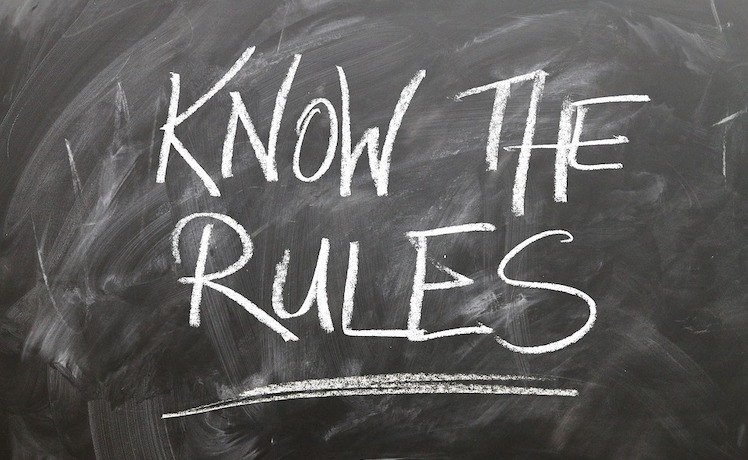
Rules of the Game: Timing
This is a reprint of an older article about the timing rules in the MFL, but it’s been updated to reflect some rules that have changed as well as giving some more clear examples of how things work.
So, if you want to know about how the clocks in the MFL work, read on!
The Game Clock
MFL games are played in two halves of 22 minutes of partial stop time each.
That seems pretty straight forward, but a lot of people aren’t sure of what is meant by ‘partial stop time’. Well, the game clock starts and stops as follows:
- The game clock is stopped at the start of the game until the first snap of the ball, unless the referee has deemed that the scheduled game start time has passed and will indicate to the time keeper to start the game clock.
- The game clock is stopped on all scoring plays and remains stopped through the convert (if applicable) and only starts again on the first snap of the ball after the change of possession.
- The game clock stops on all changes of possession and remains stopped until the first snap after the turnover. So, if you get that late interception for that one last chance to drive down and win the game, you don’t need to call a timeout!
- The game clock CAN be stopped on all penalties. The non-offending team can choose to stop the clock after accepting the penalty, but they must inform the officials that they wish to stop the clock, otherwise it will continue to run.
- The game clock will also be stopped during the administration of a penalty. So while the refs are discussing the call and moving the bags, the game clock is not running!
- The game clock stops on all timeouts called and remains stopped until the next time the ball is in play. Timeouts last 15 seconds, and the referee will blow the play in once they have deemed both teams are ready, assuming they get ready in a reasonable amount of time!
- The game clock always starts running on a snap of the ball, except for during convert attempts.
Okay, so that covers the game clock. Simple enough, right?
The Play Clock
There are of course two clocks in football, so now we’ll cover the play clock.
The play clock determines how much time an offensive team has to put the ball into play before being called for delay of game. Here’s everything you need to know about the play clock:
- The play clock is generally started at 45 seconds.
- The play clock begins counting down for a play as soon as the previous play is over. This is why teams often find themselves running low on time after longer plays since they are losing time while they get to the distant huddle.
Teams face this issue at all levels of football, but it’s part of the game! In fact, this timing is exactly what is done in the NFL.
- The play clock starts at 25 seconds on all plays where the clock is not started until the ready for play whistle is blown.This encompasses:
- A convert attempt
- The first play after a convert attempt is completed
- The first play after a turnover
The only exception to this is at the start of a half where the play clock begins at 45 seconds when the ready for play whistle is blown.
The clock is shorter on these plays because it only starts once the bags have been placed and the referee has blown the play in, rather than as soon as the last play ended. The length of time it takes the referees to place the bags and for teams to get ready on these plays is often much longer than a normal play, so 45 seconds might be too short, but it would be too long if we gave 45 seconds once the play was in fact ready.
The End of a Half
The last timing rule that seems to confuse some players is how the “Last Play” system works.
In the MFL, once the game clock reaches zero time remaining, the next play blown in by the referee will be announced as the last play. “Last Play” will always be announced before the play is blown in, so both teams should always be aware that it is the last play of the half.
Here’s a couple of examples:
- The game clock is at 5 seconds and counting down, at 3 seconds left the referee blows the play in. During the play the clock reaches 0 seconds. Before the next play is blown in, the referee will announce that the upcoming play is the last play.
- The game clock is at 10 seconds and counting. The referees are in the process of placing the bags and leaving the field. Before the referee can signal ready for play the time expires, so before whistling the play in, the referee announces that it is the last play.
So you can see that the timing of when a play is blown in is very important at the end of a half! If a ref blows a play in with 1 second left then there are two plays left, but if they only get it in a second later, it’s the last play!
So, that raises the question of when is the play blown in? For a play to be blown in, it requires the following:
- The bags are set for the upcoming play
- Both referees are in position
- The entirety of the offense and the football are behind the line of scrimmage
This last point can lead to some interesting clock manipulation. For example, let’s say that the offense wants the next play to be the last play of the half and there are 20 seconds left after a play. Let’s say that it’s fourth down at midfield and the offense just wants to throw it up one time, but they don’t want to give the other team the chance to do the same. Well, if they just have one player wait on the defensive side of the line of scrimmage until the play clock reaches zero, they can then get onside and the referee will announce that it’s last play before blowing it in. This is because there are zero seconds on the clock and the referee could not blow the play in until the offense was onside. This may seem like a small thing, but I have seen it done right and wrong many times in my career as a player and a referee!
I hope that makes everything about timing in the MFL completely clear to all our players!




